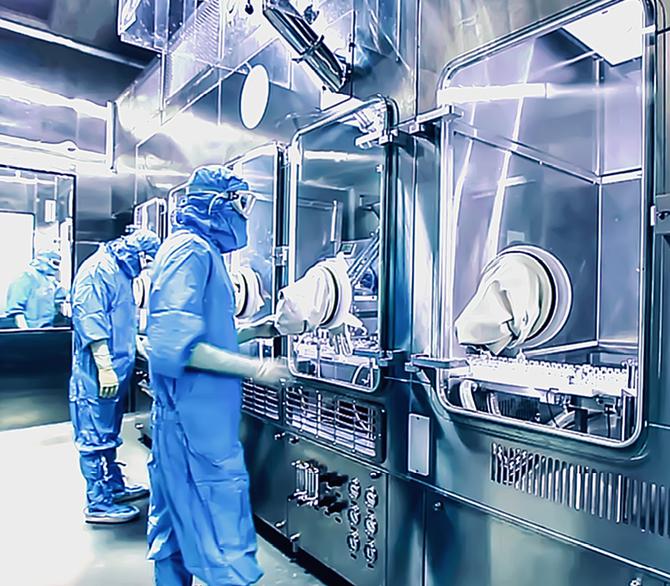Consider a future where millions can be protected from deadly malaria, and where hospitals are free from devastating antibiotic-resistant superbugs. Imagine what life would be like with high-tech brain-computer interfaces and bionic bodies, and – most exciting of all – the total eradication of many diseases.
The future presented by biotechnology is a glittering one, but, as the saying goes, all that glitters isn’t necessarily gold.
The most exciting advances in biotechnology and genetics today are accompanied by profound dilemmas. Should we allow research on human embryos in an effort to eliminate hereditary disease? How we can be sure that patients are giving informed consent to bionic implants, when the side effects are not yet clear? And how can unborn babies agree to edits being made to their DNA?
Professor Dianne Nicol, Director of the University of Tasmania’s Centre for Law and Genetics (CLG) says:
Science and technology is moving along so quickly, there are new issues coming up all the time. There’s a groundswell of developments that really are exciting.
These developments include genetic tests that can identify a person’s risk of developing particular diseases. Actor Angelina Jolie famously underwent a preventative double mastectomy after discovering that she had the BRCA1 genetic mutation, which is associated with a very high risk of developing breast cancer.
But while knowledge is power, it can also be a burden.
It’s a good development, but it’s a challenging development as well, says Professor Nicol, because with some diseases, you can diagnose, but you can’t actually do anything about it. Research and clinical ethics usually dictate disclosure, but how much? There’s a whole ethical principle about having the right not to know what’s going to happen to you in your future, as much as having the right to know.
Designer babies?
The field of genetics is rife with ethical dilemmas such as these, and the thorniest of all are those surrounding gene therapy. This is where law-makers must wrestle with profound questions that cut to the core of who we are – not only as individuals, but as a species.
“There have been really significant new developments in the last five years in manipulating our genes and our genome,” says Professor Nicol. “What would happen if you could actually fix the risk factors in a person’s own genetic composition?”
In some countries, scientists are doing just that. In 2016, a healthy so-called ‘three parent’ baby boy was born in Mexico using a new IVF technique that combines DNA from three individuals.
The technique allows women with inheritable genetic diseases encoded into their cells’ mitochondria to safely pass on the genes in their nuclear DNA to their offspring – something that would otherwise be impossible.
“It’s now possible to take a normal egg from one woman and remove the nuclear DNA that contains all the basic genetic information that’s going to make a human being,” Professor Nicol explains.
“You then put the nuclear DNA from a woman whose egg has mitochondrial disease into that healthy egg.”
We’re still a long way from birthing the first generation of designer babies, but they are undeniably on the horizon.
“You can just imagine the controversial nature of these sorts of things. You don’t know what secondary things might happen when you’re manipulating eggs and producing a live child,” says Professor Nicol.
“There might be unexpected consequences, and you can’t go through the normal consent processes – you’re relying on parental consent. There are concerns, as well, about allowing these changes to be inherited in future generations. It’s complicated!”

Cut, Paste, Copy
These incredibly complicated opportunities exist thanks to a new gene-editing technique called CRISPR-Cas9. It’s based on behaviour that occurs in the natural world, used by bacteria as a defence against viruses. When viruses invade bacteria using their own DNA, the bacteria can snip it out in response.
Scientists have now figured out how to do the same thing with faulty DNA in humans, which they can then replace with healthy DNA.
As Professor Nicol explains, Australia doesn’t allow genetic research on embryos under pretty much any circumstance. It’s prohibited, she says, “because of deep-seated concerns that people have about the idea of manipulating our genetic identity”.
But the possibility of three-parent babies could change all of that. A recent Senate committee has opened up the possibility for the new mitochondrial replacement technique to one day be legalised in Australia. Whether this extends to other forms of heritable genetic modifications is another matter.
“This is something that can only be decided if there’s really strong community agreement,” says Professor Nicol.
She adds that canvassing public opinion is one of the ways the CLG at the University of Tasmania helps law-makers work through these difficult dilemmas, along with researching, producing academic and popular articles, and working with government across a broad spectrum of issues and policies.
“We write submissions to government inquiries explaining research findings and what we identify as the issues, to help guide their views on what law and policy reform is needed,” says Professor Nicol.
“We’ve also had appointments with the Australian Health Ethics Committee and the Embryo Research Licensing Committee, along with an array of other committees working in this area, so we can bring our research to help them make decisions.”
Some of the big questions around advances in genetic research concern privacy, insurance discrimination, and patenting.
“I’ve done a lot of work in the intellectual property area,” says Professor Nicol. “The challenge is that amazing research results aren’t necessarily of benefit in the clinical or hospital context. Research results need to be translated into practice, and often you need an industry partner to help do that.”
Remarkably, she says, it can cost up to $1 billion dollars and 15 years of development and testing to get a new drug from discovery to market. For industry partners to invest these kinds of resources, they need patents to ensure that they can one day recoup the costs.
“But what’s an acceptable form of protection, and what’s an acceptable profit? What’s depriving people of the benefits, or depriving other researchers of doing their research?” says Professor Nicol.
“That’s the tension between intellectual property and benefit-sharing – how can you make sure this research benefits the researcher, as well as the community as a whole?”
Tackling these and other difficult questions involves maintaining relationships between researchers and industry, as well as developing important links to the groups that produce best practice guidelines, such as the Global Alliance for Genomic Health and the International Cancer Genome Consortium.
The CLG’s academic collaborations, which span both Australian universities and overseas research institutions, keep it at the forefront of research that makes a real difference to people’s lives.
“These are all huge issues and there aren’t easy answers to any of them,” says Professor Nicol. “But that’s what inspires us.”
Facts about the CLG
- First in the field: The CLG was the first group in Australia to dedicate itself to researching the legal, ethical, and social implications of new developments in human genetics.
- Keeping tabs on human research: The CLG helps develop guidelines to ensure that all research on humans is held to strict ethical standards.
- Safeguarding our data: Working with the Australian Law Reform Commission, the CLG uses its expertise to help update laws around data privacy and patents.
- Working globally: The CLG has helped solve tricky issues around biobanks and patents, and it’s exploring how organisations can best share their genomic data, through collaborations with the Global Alliance for Genomic Health and the International Cancer Genomics Consortium.
Interested in conducting your own research? Apply now to become a research student.
Interested in partnering with the University of Tasmania? Find out more here.
